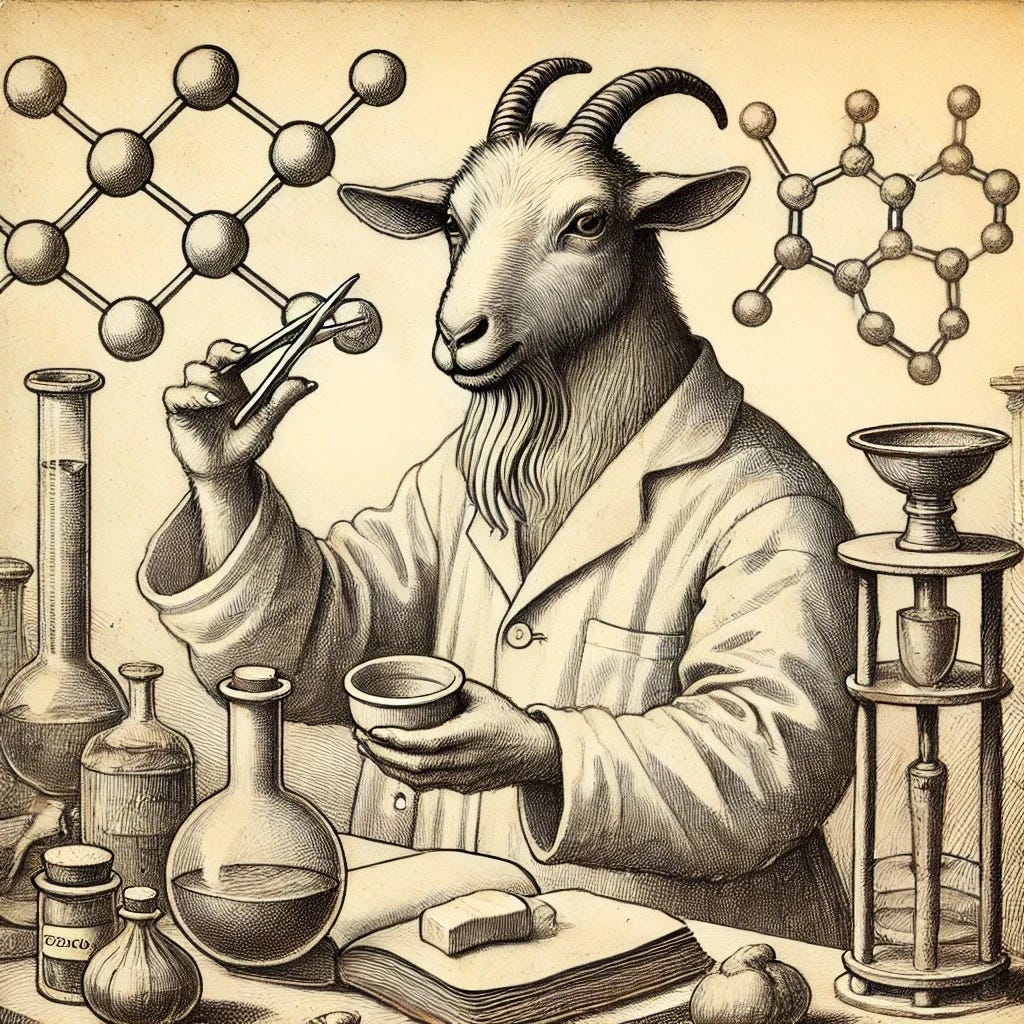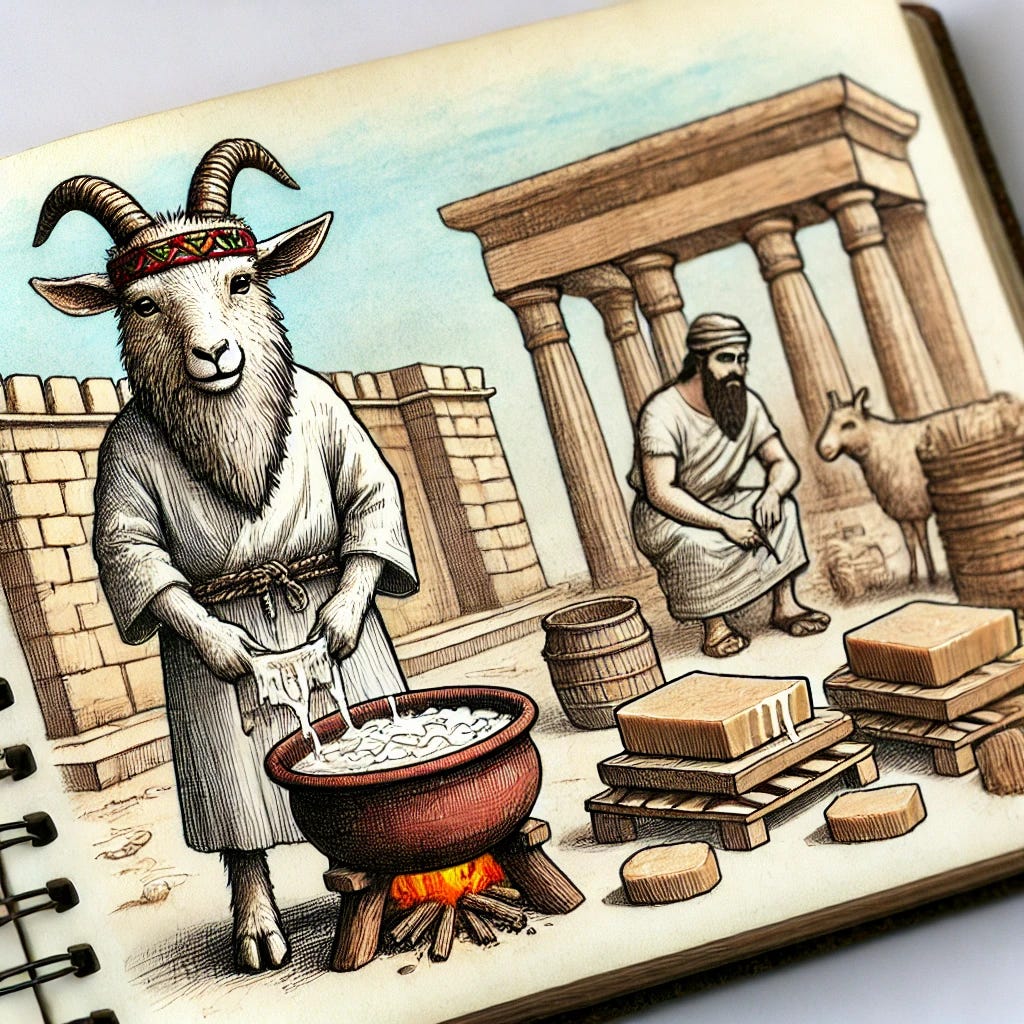Soap is salt.
In particular, soap is the salt of a fatty acid. You start with oil or fat, then add a strong base (the opposite of an acid, at least in chemical terms). The base saponifies the fat or oil, leaving behind crude soap and a byproduct called glycerol.
The type of salt you end up with determines the properties of the soap. If you use sodium, you end up with harder soaps. Potassium soaps are softer, and often used in liquid soaps.
Fats are made up of triglycerides, which are 3-pronged molecules. Each prong is made up of fatty acids attached to a glycerol “spine” of sorts—just three carbon atoms, each with a hydroxyl (hydrogen and oxygen) molecule attached.
To visualize what’s happening when soap is made, imagine these three prongs being snipped off by the base. This is helpful to understand what the end result of the reaction is, but what’s really going on is much wilder: the actual atoms are being rearranged into new molecules.
There’s even a transfer of subatomic particles—protons—leaving behind three soap molecules and one glycerol molecule.
When you wash your hands, soap works by emulsifying the grease, allowing it to be carried away by water. Something called a micelle is created—this is a bubble of soap molecules with grease trapped inside. These micelles are washed away by water, leaving behind a pair of clean hands.
With all this chemical magic happening under the hood, you might think that soap is a relatively new invention, but this couldn’t be further from the truth.
The earliest use of something like soap we know of comes from ancient Babylon, circa 2800 BCE. This is almost as far back as other pillars of civilization like writing and the wheel, and that’s just the earliest use we know of.
The ancient Egyptians, too, made a soap-like substance from animal and vegetable oils mixed with salts they found at the bottom of dried lake beds. The Egyptians used the soap for hygienic purposes, including to treat skin diseases.
By the time of the Roman Empire, soap was being used by citizens in public baths, just in the same way we might use it today. The Roman soap was usually made from tallow (animal fat) and ashes. Hard woods were especially good for this, since they were rich with potassium carbonate, a type of base that dissolves in water.
The fall of the western Roman Empire meant that way less soap was produced. We have to fast forward to the Industrial Revolution to see some significant improvements. A lot of these changes were more about making improvements in the existing process, like making soda ash (a key ingredient in soap making) much more accessible (and cheaper).
Steam power and mechanization helped to streamline the production process, while new ingredients were introduced to increase variety. Over time, liquid soaps were added as an entirely new category, and the quality and effectiveness of soap continued to improve as the price continued to fall.
Today, soap is found in every country in the world. It’s considered essential in medicine, and living standards and life expectancies everywhere have improved thanks to soap.
Unfortunately, soap is still not equally available everywhere, so there are pockets where people suffer more preventable diseases and generally face worse health conditions. And, of course, soap is only one piece of a very complex puzzle that involves access to clean water, sanitation, and health education, among other things.
Even still, the impact of soap on the modern world is monumental and undeniable. For at least five millennia, it has been slowly changing the world and making us gradually more hygienic, and helping us to live longer lives.
This ode to soap has been fun! You might enjoy this other ode I worked on with
:







Soap is so interesting in one of those, "Now how did they figure this out" sort of ways.
All I could think about while I read this, was Fight Club. Which, I just recently rewatched with a friend who had never seen it.